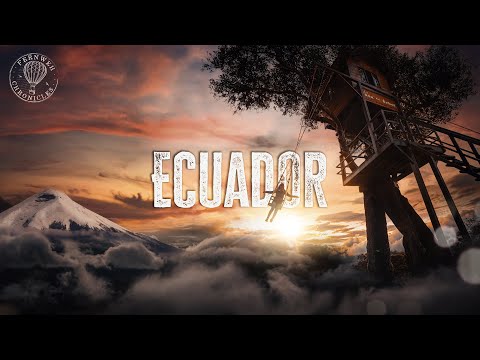
When it comes to travel, Ecuador might not always make the top of the list for most globetrotters, but this small Andean country is full of surprises that defy expectations. Known primarily for the Galápagos Islands and its biodiversity, Ecuador’s charm extends far beyond just natural wonders. From vibrant indigenous cultures and bustling markets to colonial architecture and adventurous landscapes, there’s much more to Ecuador than meets the eye.
#### A Cultural Tapestry
Visitors might arrive with simple expectations of quaint Andean music and colorful ponchos, but Ecuador’s cultural scene is a dynamic tapestry woven from a diverse population. The country is home to approximately 14 indigenous groups, each with its own distinct language, customs, and traditions. This cultural richness manifests in various festivals and local markets. A visit to Otavalo, home to one of the largest indigenous markets in South America, offers not just textiles but an opportunity to see traditional crafts like hat-making or hear Quechua spoken as a first language.
Moreover, cities like Quito and Cuenca are renowned for their well-preserved historic centers where Spanish colonial history meets indigenous influences. Walking through these cities offers a glimpse into past epochs – from grand cathedrals and monasteries to bustling square that host both tourists and local vendors selling everything from fresh produce to herbal remedies.
#### Unexpected Natural Diversity
Ecuador may be small, but its geography spans from Amazon rainforest to Andean peaks above 6,000 meters in altitude, not forgetting the coastal plains by the Pacific Ocean. This creates a staggering degree of biodiversity within a relatively compact area. Adventurers can find themselves exploring Amazonian jungle lodges in Yasuní National Park one day and hiking up glaciated volcanic peaks like Cotopaxi or Chimborazo the next.
The country’s commitment to conservation is palpable in places like Mashpi Reserve where cloud forests teem with endemic species of birds and orchids or in Mindo where hummingbirds flit amidst waterfalls. Even less heralded spots like Cajas National Park offer otherworldly landscapes at higher altitudes with hundreds of lakes formed by glacial activity.
#### Gastronomic Surprises
Ecuadorian cuisine itself is as diverse as its ecosystems. While many may anticipate standard South American fare such as empanadas or ceviche (which are indeed delicious here), there are numerous lesser-known dishes that surprise visitors. For instance, in the Sierra region you might find cuy (guinea pig), a traditional Andean delicacy roasted whole on an open fire which dates back to pre-Inca times.
Each region brings its specialties based on locally available ingredients – coastal areas serve up fresh seafood varieties while the Amazon region offers exotic fruits and vegetables found nowhere else on earth coupled with fish dishes wrapped in banana leaves.
#### Economic Complexity
Beyond its physical landscape and culture lies an unexpected economic narrative; Ecuador uses the U.S. dollar as its official currency since 2000 following economic instability which provides an interesting dynamic concerning prices ranging from incredibly cheap local fares to more expensive imported goods.
### Conclusion
From unexpectedly rich cultural festivals that pulsate with life to culinary surprises ranging from seafront ceviche stalls in Guayaquil to chocolatiers using some of the world’s finest cocoa in Quito; from adventure sports around Baños de Agua Santa’s waterfalls and hot springs to peaceful retreats in high-Andean villages — Ecuador offers varied experiences that often leave travelers surprised by what they discover beyond their initial expectations.
It’s precisely this combination of underestimation and revelation that makes visiting Ecuador such a rewarding endeavor — truly a hidden gem nestled along the equator waiting for those willing to explore beyond conventional tourist narratives.
